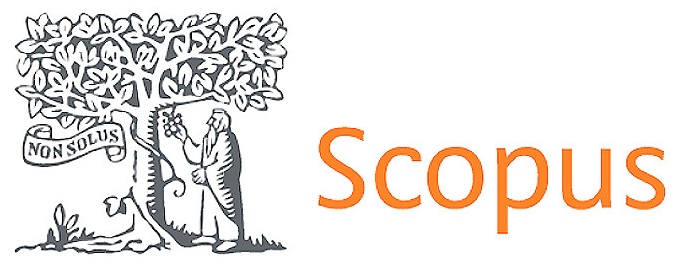Evaluation of the Effectiveness and Personalization of Artificial Intelligence Tools in Language Teaching. Perspectives and Future Directions
DOI:
https://doi.org/10.56294/mw2024.594Keywords:
Teacher training, artificial intelligence, language teachingAbstract
The incursion of Artificial Intelligence (AI) in the educational field represents a paradigm shift that transcends the boundaries of the conventional classroom, offering a wide range of functions applicable to the teaching-learning process. Despite this, there are still few studies on its application in language teaching and, specifically, on the perception of future teachers. Therefore, we present a qualitative analysis conducted with 53 students from the Degree in English Studies and Double Degree in Primary and English Studies at the University of Malaga, with the aim of evaluating the effectiveness and personalization of AI tools in language teaching. The results point to a positive vision about the future of AI, due to its effectiveness and personalization, although with different reservations about its reliability and precision, general content, and the lack of human connection.
References
1. Duan Q, Xiao M, Bai Y. A Review of International Research on Artificial Intelligence in Teachers' Teaching. 2023 IEEE 12th International Conference on Educational and Information Technology (ICEIT). 2023:167–172.
2. Zawacki-Richter O, Marín VI, Bond M, Gouverneur, F. Systematic review of research on artificial intelligence applications in higher education – where are the educators? International Journal of Educational Technology in Higher Education. 2019;16:1-27.
3. Dash S, Bhoi C. Exploring the Intersection of Education and Artificial Intelligence: A Comprehensive Review. International Journal of Multidisciplinary Approach Research and Science. 2024;2(02):601–610.
4. Barrera Castro GP, Chiappe A, Becerra Rodríguez DF, Sepulveda FG.Harnessing AI for Education 4.0: Drivers of Personalized Learning. Electronic Journal of e-Learning. 2024;22(5):14.
5. Dogani B. Active learning and effective teaching strategies. International Journal of Advanced Natural Sciences and Engineering Researches. 2023;7(4):136–142.
6. Xu F, Wang L, Gao J. Thoughts on Application of Artificial Intelligence in Teaching of Different Disciplines. In: The 15th International Conference on
Computer Science and Education; 2020, p. 703–707.
7. Prabhakaran V, Qadri R, Hutchinson B. Cultural Incongruencies in Artificial Intelligence. ArXiv (Preprint). 2022.
8. Bowen G, Bowen D, Bamford L. AI and Ethics: Embedding Good Aspects of AI. In: Jahankhani H, editor. Cybersecurity Challenges in the Age of AI, Space Communications and Cyborgs. ICGS3 2023. Springer; 2024, p. 245-258.
9. Li Z, Dhruv A, Jain V. Ethical Considerations in the Use of AI for Higher Education: A Comprehensive Guide. In: IEEE 18th International Conference on Semantic Computing (ICSC); 2024, p. 218-223.
10. Tonbuloğlu B. An evaluation of the use of artificial intelligence applications in online education. Journal of Educational Technology & Online Learning. 2023;6(4):866–884.
11. Liu Y, Chen L, Yao Z. The application of artificial intelligence assistant to deep learning in teachers’ teaching and students’ learning processes. Front. Psychol. 2022;13.
12. Ismail A, Aliu A, Ibrahim M, Sulaiman A. Preparing Teachers of the Future in the Era of Artificial Intelligence. Journal of Artificial Intelligence. Machine Learning and Neural Network (JAIMLNN). 2024;4(4):31–41.
13. Mon BF, Wasfi A, Hayajneh M, Slim A. A Study on Role of Artificial Intelligence in Education. In: Miraz MH, Southall G, Ali M, Ware A, Campbell C, Walcott T, editors. Proceedings - 2023 International Conference on Computing, Electronics and Communications Engineering; 2023, p. 133–138.
14. Menéndez-Mera MK, Aroca-Izurieta CE, Ríos-Quiñónez MB, Vizcaíno-Zúñiga PI, López-Velasco JE. La aplicación de modelos de inteligencia artificial para personalizar el proceso de aprendizaje en función de las inteligencias múltiples: The application of artificial intelligence models to customize the learning process based on multiple intelligences. LATAM Revista Latinoamericana de Ciencias Sociales y Humanidades. 2024;5(3):751–771.
15. Underwood J. Exploring AI language assistants with primary EFL students. In: Borthwick K, Bradley L, Thouësny S, editors. CALL in a climate of change: adapting to turbulent global conditions – short papers from EUROCALL 2017; 2017, p. 317–321.
16. Lin, H. Influences of Artificial Intelligence in Education on Teaching Effectiveness: The Mediating Effect of Teachers’ Perceptions of Educational Technology. International Journal of Emerging Technologies in Learning (iJET). 2022;17(24):144–156.
17. Karataş F, Abedi FY, Gunyel FO, Karadeniz D, Kuzgun Y. (2024). Incorporating AI in foreign language education: An investigation into ChatGPT’s effect on foreign language learners. Educ Inf Technol. 2024; 29: 19343–19366.
18. Mohamed AM. Exploring the potential of an AI-based Chatbot (ChatGPT) in enhancing English as a Foreign Language (EFL) teaching: Perceptions of EFL Faculty members. Education and Information Technologies. 2024; 29, 3195–3217.
19. Gupta S, Dharamshi R, Kakde V. An Impactful and Revolutionized Educational Ecosystem using Generative AI to assist and assess the Teaching and Learning benefits, fostering the Post-Pandemic requirements. In: Second International Conference on Emerging Trends in Information Technology and Engineering (ICETITE); 2023, p. 1–4.
20. Nithya, SC. Perception of Prospective Teachers on AI Application in Educational Field. Shanlax International Journal of Arts, Science and Humanities. 2023;11(1):27–31.
21. Ifraheem S, Rasheed M, Siddiqui A. Transforming Education Through Artificial Intelligence: Personalization, Engagement and Predictive Analytics. Journal of Asian Development Studies. 2024;13(2):250-266.
Published
Issue
Section
License
Copyright (c) 2024 Rubén González Vallejo (Author)

This work is licensed under a Creative Commons Attribution 4.0 International License.
The article is distributed under the Creative Commons Attribution 4.0 License. Unless otherwise stated, associated published material is distributed under the same licence.






